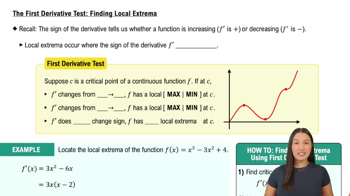45–50. Tangent lines Carry out the following steps. <IMAGE>
b. Determine an equation of the line tangent to the curve at the given point.
x⁴-x²y+y⁴=1; (−1, 1)
 Verified step by step guidance
Verified step by step guidance Verified video answer for a similar problem:
Verified video answer for a similar problem:



 5:14m
5:14mMaster Finding The Implicit Derivative with a bite sized video explanation from Patrick
Start learning